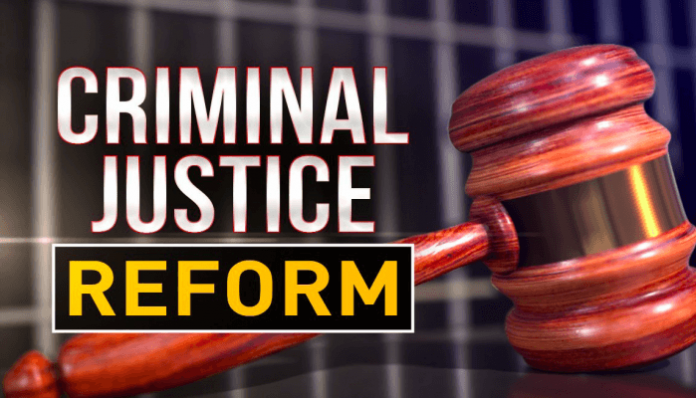This article is written by Manasvee Malviya, a student from the University of Petroleum and Energy Studies, Dehradun. This article discusses the objectives and the challenges faced by the Ranbir Singh committee.
Table of Contents
Introduction
The world is dynamic and crime is increasing around the world. The law must be amended according to the changes and needs of society. The criminal laws were enacted to regulate the criminal offenders, reduce the crime rate, and keep a crime-free society. Indian Criminal law consists of the Indian Penal Code, 1860, Code of Criminal Procedure, 1974, and the Indian Evidence Act, 1872. Over the past years, the law commission and law committees have reviewed and recommended suggestions in the criminal law in India to bring them into line with “Constitutional norms” and to get rid of their “paternalistic notions”. Such as the Malimath Committee 2003, Madhav Menon committee 2007, and the 42nd law commission report.
The most recent example of an amendment in criminal law is the Criminal Law Amendment Act, 2018. Even though there have been a lot of amendments, the present criminal law is still lacking the needs which are congruent to society. Hence, the Ranbir Singh Committee was constituted to “recommend reforms in the country’s criminal laws in a principled, effective, and efficient manner that assures the person’s, community’s, and nation’s safety and security; and that prioritizes the constitutional ideals of justice, dignity, and intrinsic worth of the individual.”
In this article, we will discuss the objectives, consultation process, and challenges faced by the Ranbir Singh Committee.
The Ranbir Singh Committee
In May 2020, the Ministry of Home Affairs established a National Level Committee to consider reforms to the country’s existing criminal laws, such as the Indian Penal Code, 1860, the Code of Criminal Procedure, 1973, and the Indian Evidence Act, 1872. Through an online consultation tool, the committee has sought recommendations from specialists in the fields of substantive and procedural criminal law.
The Committee will have the following members:
- Chairperson- Prof (Dr)Ranbir Singh, Vice-Chancellor, National Law University Delhi.
- Member & Convenor- Prof. (Dr.) G. S. Bajpai, Registrar, National Law University Delhi.
- Member- Prof. (Dr.) Mrinal Satish, Professor, National Law University Delhi.
- Member- Mr Mahesh Jethmalani, Senior Advocate, Supreme Court of India.
- Member- Mr G. P. Thareja, Former District & Session Judge, Delhi.
Objectives of the committee
Criminal laws in India were enacted around 160 years ago in the colonial era. Since the enactment, the laws have not gone through a comprehensive review. Indian Penal code and Code of Criminal Procedure were designed according to the needs of the Britishers to rule the nation.
The objective of the committee is to make recommendations in a structured and efficient manner to ensure individuals, communities, and nations’ safety. The committee has to look into substantive criminal law, procedural criminal law, and the law of evidence.
The committee has to review and modernize the laws according to the society and align them with constitutional values of morality, justice, and dignity.
- Under the substantive criminal law the committee has to examine and recommend changes in definitions, forms of punishment, general exceptions, actus reus, and mens rea, structuring strict and absolute liability, amount of punishment, development of principles from the judicial precedents as may be needed and reviewing the work of previous law commissions.
- Under the procedural criminal law, the committee has to effectively and efficiently examine, re-consider and recommend by restructuring Cr. P.C that not only protects the rights of the accused and the victims but also ensures public safety, strengthening the criminal justice institutions, limiting the powers exercised by the criminal justice institution(including the discretionary power), provisions related to the investigation, arrest, bail, trial procedure, plea bargaining, development of provisions from the judicial precedent as may be needed and reviewing the work of previous law commissions.
- Under the law of evidence, the committee has to examine and recommend reforms by modernizing according to the present and future needs by amending provision related to rule of admissibility, the burden of proof, the doctrine of fruits of the poisonous tree and sealed cover, electronic evidence, forensic science, development of provisions from the judicial precedent as may be needed and reviewing the work of previous law commissions.
Guiding principles
The Ministry of Home Affairs is of the view that the criminal laws in India are drafted according to the colonial laws. The Indian Penal Code and the Law of Evidence were drafted when India didn’t have its own Constitution and there was no Universal Declaration of Human Rights. The Ministry considers these laws somewhat to be inconsistent with the Constitution and human rights.
For example, in 2018 Supreme Court held Section 377 Of IPC to be unconstitutional as it violates Article 21 of the Constitution of India in the case of Navtej Singh Johar v Union of India,2018. The main reason to set up this committee is to align the Criminal law in India with the Constitutional principle. Guiding principles are as follows:
- The primacy of the Constitution of India
- The primacy of human rights
- An unambiguous and consistent procedure
- Fair and time-bound investigation and trial
- Transparency and accountability
- Victim justice
- Principled sentencing
- Infusing techno-centricity
- Revisiting the relationship between the state and individual
- Balancing the rights of victims and accused
The consultation process: a detailed explanation
The committee was constituted in 2020 when the world was fighting against the pandemic. At the time of the constitution of the committee, everyone knew that a face-to-face consultation mechanism was not possible.
For fulfilling the aims and objectives of this committee an online consultation mechanism was set up for inviting recommendations from the stakeholders, professionals, and functionaries. Stakeholders like judges, lawyers, academics, etc. An open consultation procedure is considered for inviting suggestions from the public. For the consultation process, any person can register himself/herself and share his/her views and recommendations on the question of law.
Questionnaire-based consultation
The committee prepared three questionnaires highlighting all the issues in substantive criminal law, procedural criminal law, and the law of evidence. The questionnaire prepared is the result of extensive research and discussions. For responding to the questionnaire the stakeholders have to register and after the generation of a unique code, the stakeholders were able to respond over multiple sessions. The committee accepted responses of experts on the area of law mentioned for 3 months. The consultation process began in July 2020 and accepted the responses till October 2020.
Open consultation
The issues which are not directly covered in the questionnaire-based consultation were accepted through this mechanism. It was scheduled for almost 1 month. Open consultation mechanism covers a large part of the audience, as it engages government, private sector, academia, technical community, etc. The purpose of open consultation is that any area which is left unseen by the questionnaire can be covered. And it gives opportunities to the public to express their views and suggestions.
Regional consultation
The committee also encouraged the regional consultation and requested law universities to conduct consultations on behalf of the committee and submit them. As per the notice issued by the committee, Symbiosis Law School Pune, Gujarat National Law University, University of Petroleum and Energy Studies Dehradun, and Maharashtra National law university have conducted regional consultation.
Issues identified by the committee
Several issues have been identified by the committee for the need for reforms. Some of them are as follows:
- First, the criminal laws in India were according to the British jurisprudence to rule the nation.
- Second, the Indian Criminal laws are facing many issues related to the protection of the rights of the citizens. There has been development in the areas, where the offence committed violates the fundamental rights but the criminal legislations are silent about the act committed. For example, the Indian Penal Code is silent on the matter of marital rape but according to the Indian Constitution, it violates the fundamental rights of the victim. Therefore, the criminal law must be consistent with the Constitution.
- Third, the pendency of the cases in the courts.
- Fourth, inconsistency, lack of transparency and delay in the investigation process, accountability of the police, arrest, and bail.
- Fifth, the Malimath and Madhav Menon committee report made recommendations on the criminal justice system in India which were not implemented.
- Sixth, misuse of discretionary power and limiting the abuse of power.
Criticism faced by the committee
Unlike the other committees, the Ranbir Singh committee also faced criticism.
- The main issue faced by the committee was its constitution. This committee consists of all male members, there was no diversity in the committee’s constitution. No women, no SC/STs, no disabled, no backward class, no transgender.
- At the initial stage of the consultation process, the questionnaire was only available in English. Though the committee requested universities to conduct consultation at the regional level. It was unclear whether the notice issued to universities was mandatory or not.
- The time period for the committee was 6 months and due to this reason, the period of responding to the questionnaire was shorter. Compared to the other committees like the Malimath committee which took 3 years, the time frame provided by the ministry for this committee was very less.
- People felt the committee hasn’t given them a fair chance to be a part of the reform, and how it is conducted wasn’t satisfactory.
- There was a word limit of 200 words per question for responding which limits stakeholders, functionaries, and professionals to deal with the questions in a detailed and comprehensive way.
- The responses received from the consultation process weren’t available on the committee’s website.
- The committee was formed by the Ministry of Home Affairs but no information could be found on the home ministry website. So the question arose whether the committee is working independently?
- The formation of a committee with such a broad and important mandate during a public health emergency raises suspicions about the Centre’s intentions.
- The invitation for public discussions has not been well advertised or publicized, resulting in a very limited reach.
Way forward
- A clear policy must be drafted to inform all the changes in the existing criminal law in India.
- The committee must ensure to bring peace around the society by focusing on reformative justice.
- An improvement must be made in the provisions related to police, prosecution, investigation, the rights of the accused, and the person in prison.
Conclusion
The Ranbir Singh committee is established with the aims to modernize criminal law reforms consistent with the Constitution of India, Judicial developments, and human rights. The step taken by the government is appreciated to reform the criminal law in India, but the timing is not. The manner in which the consultation process is conducted is stealthy and rushed. But at the same time, this committee has provided the opportunity to the public to be a part of policy formation so that the results and the new reforms are according to the changing times and needs of the society, which represents all classes and communities.
References
- https://cjp.org.in/a-closer-look-at-the-new-criminal-reforms-committee/
- https://disbandthecommittee.in/inthenews.html
LawSikho has created a telegram group for exchanging legal knowledge, referrals, and various opportunities. You can click on this link and join:
https://t.me/joinchat/J_0YrBa4IBSHdpuTfQO_sA
Follow us on Instagram and subscribe to our YouTube channel for more amazing legal content.
 Serato DJ Crack 2025Serato DJ PRO Crack
Serato DJ Crack 2025Serato DJ PRO Crack











 Allow notifications
Allow notifications



